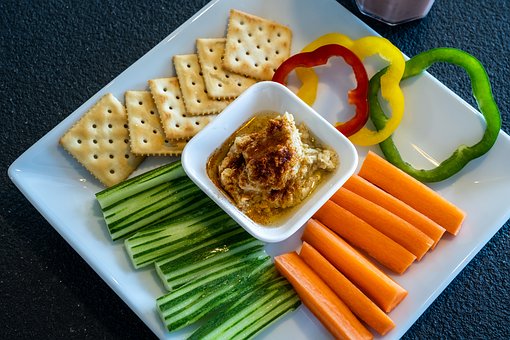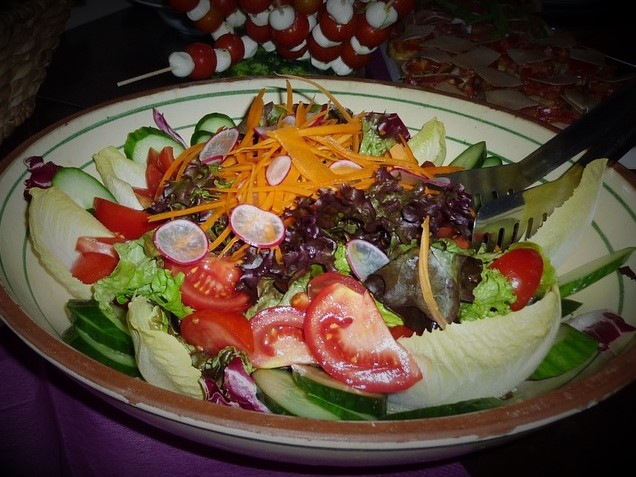 The rising cost of living isn’t a new concept, but this year many people are really going to feel the pinch with the massive uplift in oil costs, stagnant wages, loss of income thanks to Covid, rising National Insurance Contributions in April, and disproportionate rises in food costs. It may feel dire, especially if you’re pretty frugal already. Maybe it’s time to take a page out of Granny’s book and see what we can do to tighten the purse strings and mitigate some of our expenditure.
The rising cost of living isn’t a new concept, but this year many people are really going to feel the pinch with the massive uplift in oil costs, stagnant wages, loss of income thanks to Covid, rising National Insurance Contributions in April, and disproportionate rises in food costs. It may feel dire, especially if you’re pretty frugal already. Maybe it’s time to take a page out of Granny’s book and see what we can do to tighten the purse strings and mitigate some of our expenditure.
Oil prices this year are about to hit us hard in the pocket with heating estimated to rise by around 50%. That’s around £30-50 extra per month for many of us with gas central heating. But, salaries and pensions haven’t gone up (at all in most cases) by anywhere near £50 a month. So, let’s look at some very simple ways of making tiny changes that would make a small difference – bearing in mind that each little difference can add up to a bigger saving.
Warmth. One of our biggest financial outlays is heating our homes. Turning the heating thermostat down by a degree or two will save you money without you feeling a massive difference. Just turning the thermostat down 1° could save you around £50 a year. Experts recommend a consistent ambient level of 18° heat indoors, whereas many of us have a tendency to keep the heating on around 20° these days. Rather than put the heating on, or up if already on, consider other ways to keep warm.
 Firstly, cook something! The heat from the oven increases the ambient warmth in the surrounding rooms. But also, your body temperature rises when you’ve had something to eat or a hot drink. Now, I don’t expect you to be cooking and yamming food down all through the day but a warming lunch, rather than a sandwich or salad, really helps. Consider a soup perhaps, or a pasta bake. When you’ve been cooking, leave the oven door open when you’ve turned it off, rather than waste that lovely heat.
Firstly, cook something! The heat from the oven increases the ambient warmth in the surrounding rooms. But also, your body temperature rises when you’ve had something to eat or a hot drink. Now, I don’t expect you to be cooking and yamming food down all through the day but a warming lunch, rather than a sandwich or salad, really helps. Consider a soup perhaps, or a pasta bake. When you’ve been cooking, leave the oven door open when you’ve turned it off, rather than waste that lovely heat.
Look at wearing more clothes. Yes that seems obvious, but how many of us actually bother putting on socks, jumpers or cardi’s when inside our own homes? So layer up a bit. Also invest in some throws.  They’re really popular in soft furnishing design these days. I have a wicker log basket with various rolled up throws in, as well as those slung all designer-ish on the chairs and sofas, and even on the foot of beds. When feeling a bit chilly, snuggling into a nice warm throw is yummy. As the evening draws in, close the curtains. This keeps so much warmth indoors, as the glass windows just seep in the cold air. If your radiator is in front of the window, tuck the curtain behind it rather than let out what heating you do have on.
They’re really popular in soft furnishing design these days. I have a wicker log basket with various rolled up throws in, as well as those slung all designer-ish on the chairs and sofas, and even on the foot of beds. When feeling a bit chilly, snuggling into a nice warm throw is yummy. As the evening draws in, close the curtains. This keeps so much warmth indoors, as the glass windows just seep in the cold air. If your radiator is in front of the window, tuck the curtain behind it rather than let out what heating you do have on.  Revert to the old methods at bedtime – pre-warming the bed with an electric blanket (always turn them off when you actually get into bed!) or a hot water bottle. Once actually snug in bed, you have a better night’s sleep with the room being a bit cold than you do by leaving the heating on. If need be, add another layer of bedding too.
Revert to the old methods at bedtime – pre-warming the bed with an electric blanket (always turn them off when you actually get into bed!) or a hot water bottle. Once actually snug in bed, you have a better night’s sleep with the room being a bit cold than you do by leaving the heating on. If need be, add another layer of bedding too.
You can also look at only heating the rooms you use. If you have individual radiator thermostats you can set the temperature per room as appropriate for each user. But if you don’t, you can still turn them down or even off (be careful of checking for condensation occasionally if you turn them off completely). If for example you’re living alone in a 3-bedroom house, you only need your own bedroom warmed not all 3 when the spare rooms aren’t being used. Do you need a radiator on in your kitchen-diner? Chances are you don’t.
Insulation is a one-off potentially sizeable cost, but with future ongoing benefits. But short term, you can do some DIY insulation – if you have a hot water tank and it’s not insulated you can buy wrap around insulation or literally use any old blankets and towels you might have as a temporary DIY lagging.
Use draft excluders at your doors. You can buy them pretty cheaply these days, or easily make your own. Indeed, just roll up some of those old blankets or towels into a chunky sausage shape and lay it in front of the door. You can hang a (preferably quite heavy) curtain at the door. You’ll be amazed just how much cold air comes in, and your expensive heating lost, just through external doors. Especially those with glass panels.
Do you have wooden or laminate flooring? Although lovely, these are colder than carpet. Maybe invest in a nice rug or two.
One of the simplest of all – close doors! I’m sitting here now, realising both the doors in my living room are wide open – one to the kitchen and one to the hallway. My excuse is the pets! But, just pushing the door to, rather than fully closed, in itself saves on drafts. While on the subject, snuggling the pets is a good body warmer too.
 Saving water. Now, as well as saving the planet we can save money on our water bills. Unfortunately, for those who still have water rates rather than a water meter, whilst you could still do your bit for the environment you won’t be saving on your bills as they’re based solely on the property size. So recommendation #1 would be to ask your water provider if your home can be converted – the general rule of thumb is if you have the same number or more bedrooms than people in your property, a water meter is highly likely to save you money. Fitting is still free in England and Wales. This way, you pay for what you use and can be more in control of your expenditure.
Saving water. Now, as well as saving the planet we can save money on our water bills. Unfortunately, for those who still have water rates rather than a water meter, whilst you could still do your bit for the environment you won’t be saving on your bills as they’re based solely on the property size. So recommendation #1 would be to ask your water provider if your home can be converted – the general rule of thumb is if you have the same number or more bedrooms than people in your property, a water meter is highly likely to save you money. Fitting is still free in England and Wales. This way, you pay for what you use and can be more in control of your expenditure.
We use so much water these days and waste such a lot of it. If you don’t already have a water-butt, grab one for the garden. This does of course have a cost, but not a massive one. Look online (eg Facebook groups) for bargains and giveaways. See if your water provider or local council has any deals on. You can insert the piping into the bath/sink downpipe and so use the water you’ve washed in to water your beloved garden. Or, let’s face it Britain gets plenty rain, so gather the rainwater as it falls. Indeed, you can get a small discount on the sewage element of your water bill by notifying your provider that you have a water butt for such purposes.
Did you realise that about a third of household water usage is flushing the toilet? If you don’t have a low-volume flush loo, you can reduce the amount of water that’s taken in by the tank, and so less washed away with each flush, by installing a water displacement device. You can buy devices for a little amount of money, but also try seeing if your water provider has any freebies. Alternatively, a quick google online will help you with some home-made options.
You may also save water if you have a dishwasher by doing one big load per day/couple of days, rather than by washing up by hand a number of times a day. Modern dishwashers tend to be reasonably water-saving compared to when they first came onto the market.
 We all know the ‘shower not bath’ comparison, but some of us actually enjoy a relaxing soak in the bath. But, you can still save by just putting less water in. You don’t need a bath filled to the top. Just put an inch or two less in than usual. You’ll barely notice but be saving gallons of water. Which of course, you’ll be draining into your water butt when finished!
We all know the ‘shower not bath’ comparison, but some of us actually enjoy a relaxing soak in the bath. But, you can still save by just putting less water in. You don’t need a bath filled to the top. Just put an inch or two less in than usual. You’ll barely notice but be saving gallons of water. Which of course, you’ll be draining into your water butt when finished!
 Transport. OK this is an emotive issue. We like our cars. They give us the freedom to go out whenever we want, not be restricted by a timetable, we get there more quickly than public transport stopping every few yards or meandering around the town. But, they’re a money-pit. Tot up just how much the vehicle costs you – not just literally the one-off purchase expense, but also yearly vehicle tax (unless exempt), MOT and servicing costs, insurance, petrol/diesel costs and ongoing maintenance. Also remember any recovery service costs if you’ve signed up to one. The ever-rising cost of parking, let alone any ‘low emission zone’ charges (eg if you drive into London). It adds up. Then compare that to the cost of public transport. Even the odd taxi could be cheaper than the ongoing running cost of your own car.
Transport. OK this is an emotive issue. We like our cars. They give us the freedom to go out whenever we want, not be restricted by a timetable, we get there more quickly than public transport stopping every few yards or meandering around the town. But, they’re a money-pit. Tot up just how much the vehicle costs you – not just literally the one-off purchase expense, but also yearly vehicle tax (unless exempt), MOT and servicing costs, insurance, petrol/diesel costs and ongoing maintenance. Also remember any recovery service costs if you’ve signed up to one. The ever-rising cost of parking, let alone any ‘low emission zone’ charges (eg if you drive into London). It adds up. Then compare that to the cost of public transport. Even the odd taxi could be cheaper than the ongoing running cost of your own car.
The downside of course is time and the biggie – convenience. In my region public transport can be a reasonable wait (15 minutes if you use the ‘right’ service), but some might run half hourly, hourly or even just a couple of buses a day. And they’re not reliable, especially at the moment with Covid absences affecting drivers. Unfortunately, public transport companies won’t put on extra buses until people use them more, and people won’t use them more until the frequent services are there… and so the never-ending circle continues.
You can save on public transport costs, if you use them regularly, with bus passes, multi ticket discount systems, whole day-out tickets, railcards, etc. Of course, there’s also the free and healthy option of walking or cycling if your journey isn’t too far for you.
TV and entertainment. Entertainment systems can have a horrific cost! Sky for example is setting many people back around £100 a month. Consider what channels you actually watch, do you really need them all? Of course the likes of Sky and Virgin catch us out by mixing their packages so that there’s always channels you regularly watch that mix over more than one package and so keep us paying more. But if you only really watch the ‘main five’ and maybe a few select other channels consider switching to a Freeview service. Again this is a relatively small outlay for the benefit of ongoing savings, but also that outlay may be significantly cheaper than one month of your current service. Do also check with your family members, some providers permit subscription sharing (I’m looking at you Netflix and Prime) so perhaps you could divide the costs between you and your children/parents.
 Shopping. Put those apps away! It’s so easy to scroll through Amazon, Ebay, Boots, etc etc and be slipping unnecessary wants into your electronic basket. One swipe and it’s paid for and on its way. It’s a shopaholic’s dream. If you wait until you actually head out of the house to buy stuff, the chances are that many of your spontaneous purchases just wouldn’t happen.
Shopping. Put those apps away! It’s so easy to scroll through Amazon, Ebay, Boots, etc etc and be slipping unnecessary wants into your electronic basket. One swipe and it’s paid for and on its way. It’s a shopaholic’s dream. If you wait until you actually head out of the house to buy stuff, the chances are that many of your spontaneous purchases just wouldn’t happen.
Pets. We love our pets, and we spoil them. But do look at whether you’re getting value for money when you spend your dosh on their needs or treats. If you’re buying regular parasite prevention medications at the vet, look at whether your local pet superstore can do them cheaper. For example, my cats’ flea treatment is just £4 a month each, with a delivery subscription, so is saving me a small fortune and it pops through the door when the dosage is due so I don’t even have to remember.
 Look at the food you’re giving them. Does it have to be the super-expensive, prettily packaged, doggy terrine? Surely Poochy could eat just as well with a different brand? Look at online pet supermarkets, you can bulk buy and often save quite a bit on your regular brands, but also some online firms do cheap tester packs of brands you may never have tried before. Do you have to buy expensive toys? Believe me, a cat will play just as long with a ball of rolled up cooking foil or a walnut (in its shell!) as they will with a purchased ball.
Look at the food you’re giving them. Does it have to be the super-expensive, prettily packaged, doggy terrine? Surely Poochy could eat just as well with a different brand? Look at online pet supermarkets, you can bulk buy and often save quite a bit on your regular brands, but also some online firms do cheap tester packs of brands you may never have tried before. Do you have to buy expensive toys? Believe me, a cat will play just as long with a ball of rolled up cooking foil or a walnut (in its shell!) as they will with a purchased ball.
Food shopping. OK, now my favourite. Grub. Of course, I’m an advocate of making your own. My recipe book – https://scottishfarmhousekitchen.com/books/ gives you some simple straightforward ideas to try. Also, review some of my earlier blogs such as breadmaking – https://scottishfarmhousekitchen.com/2018/02/
Baking your own cakes and biscuits can be so rewarding, and far cheaper than buying them. Your own won’t be full of additives and preservatives either. Some very basic sponges, scones and pastry would get you started.
 But, there are other tricks you can try. Downsizing your brands is a very simple one. Whatever level you shop at, whether you buy all proprietary brands or are a supermarket own-brand shopper, there’s generally one step lower. I don’t expect everyone to go from top brand names straight to value ranges, but some key items could really save you money. Unless you’re a professional baker, downgrading your flour to own brand, or even the value range, really won’t be noticed and may save you over £1 per bag. Similar with other basics such as sugar, butter, milk or dried fruit. But also look at your bread – if just making sandwiches then a simple cut loaf is far cheaper than the bakery artisan loaf. Keep those for treats. Do the same with other products and you could save quite a hefty amount.
But, there are other tricks you can try. Downsizing your brands is a very simple one. Whatever level you shop at, whether you buy all proprietary brands or are a supermarket own-brand shopper, there’s generally one step lower. I don’t expect everyone to go from top brand names straight to value ranges, but some key items could really save you money. Unless you’re a professional baker, downgrading your flour to own brand, or even the value range, really won’t be noticed and may save you over £1 per bag. Similar with other basics such as sugar, butter, milk or dried fruit. But also look at your bread – if just making sandwiches then a simple cut loaf is far cheaper than the bakery artisan loaf. Keep those for treats. Do the same with other products and you could save quite a hefty amount.
Talking of treats, rather than go without, down-brand your cakes and biscuits. The store’s own brand versions are often just as good – often it’s the exact same item from the same factory just packaged differently.
To make yourself feel a bit better, rather than feeling like you’ve scrimped and saved all the enjoyment out of life, do allow yourself some of your favourites. I still refuse to short-cut on my coffee for example. Maybe you have a favourite brand of butter that you just feel life’s too short to miss. Make cuts elsewhere and you’ve basically earned these little extravagances.
If you’ve a tendency to veer off your shopping list and be swayed by the product placement in store, shop online. Not only can you be lazy and have the shopping delivered to your door (some advance planning is required!) but you’re more likely to stick to your list. The downside being of course that you can’t visit the reduced item shelves.
Don’t over-buy and waste food. Again, advance planning is a good idea. If you rarely use fresh vegetables, don’t buy masses and fill the fridge just because you had a health-kick moment. Buy what you need, and what you’ll eat. If you absolutely have no choice but to chuck food away, please dump it into your compost heap (but not meat products). Make the most of your freezer. Many fresh foods can be frozen, if you’re unsure how to freeze any particular item then Google is your friend.
These are just a few ideas, but there are so many more:
- Look at what cleaning products you actually need – are you buying too many? Buying an expensive brand?
- Check your home for drafts and take steps to mitigate the problem.
- Ensure your gas boiler is serviced once a year.
- If you buy newspapers or magazines, is there a free online version you could read instead?
- If you buy books, why not buy the cheaper kindle version? You don’t even need to buy an e-reader, you can download the app (for free) onto your smartphone or laptop.
- Check out second hand before you buy new – eg picture frames. You could find the perfect frame with some ucky picture in it, for just a couple of pounds rather than spend out on an expensive new frame.
- Consider online marketplaces such as Ebay, Facebook or even Freecycle.
- Charity shops are everywhere now and they don’t just sell old ladies’ cast off nighties, you can get some cracking bargains in clothing, homewares and furniture items.
- Car boot sales are great.
- If you need to take the family out for the day, look to see what’s available locally to you for free or at low cost.
- Take a picnic instead of eating out.
 Your salary income, taxes and many outgoings may be out of your direct control. But, let’s do what we can to mitigate the impact on us and maximise where your money goes. Be wary of scams – if it looks too good to be true, it generally is! Don’t let some spotty teenage oik half way around the world deplete you of your hard-earned money.
Your salary income, taxes and many outgoings may be out of your direct control. But, let’s do what we can to mitigate the impact on us and maximise where your money goes. Be wary of scams – if it looks too good to be true, it generally is! Don’t let some spotty teenage oik half way around the world deplete you of your hard-earned money.
Take care, stay safe and eat well x
Love
Maggie x
 Slice up some fingers of vegetables such as carrots, peppers, cucumber, celery, mange tout, mini sweetcorn. Ideal on their own, you can add a healthy dip such as hummus or peanut butter if you like. For an element of sweetness, slice up a nice crunchy apple, some blueberries, raisins, Brazil nuts and sunflower seeds. Again, if you need a dip some natural yoghurt would be a nice addition.
Slice up some fingers of vegetables such as carrots, peppers, cucumber, celery, mange tout, mini sweetcorn. Ideal on their own, you can add a healthy dip such as hummus or peanut butter if you like. For an element of sweetness, slice up a nice crunchy apple, some blueberries, raisins, Brazil nuts and sunflower seeds. Again, if you need a dip some natural yoghurt would be a nice addition. A lot of our eating timescales are habitual. As a species, humans like consistency and habits form easily. Try to avoid insisting on a set time for your coffee or tea break, or at least don’t always take a slice of cake or sugary biscuit at the same time. These should be occasional treats, not a daily habit. If you can mix up your break times, you won’t find you feel hungry shortly before this time as a matter of habit.
A lot of our eating timescales are habitual. As a species, humans like consistency and habits form easily. Try to avoid insisting on a set time for your coffee or tea break, or at least don’t always take a slice of cake or sugary biscuit at the same time. These should be occasional treats, not a daily habit. If you can mix up your break times, you won’t find you feel hungry shortly before this time as a matter of habit. Nuts: Mixed nuts are a brilliant source of protein and healthy fats, but you may want to add sultanas or raisins for a top up of sweetness. Avoid salted nuts to avoid excess sodium in your diet.
Nuts: Mixed nuts are a brilliant source of protein and healthy fats, but you may want to add sultanas or raisins for a top up of sweetness. Avoid salted nuts to avoid excess sodium in your diet. Root vegetable crisps: If you’re a crisp fiend, and just can’t let them go, swap potato crisps for vegetable crisps. You can buy them, or make your own (simple recipe available in my book ‘Picnics, Parties and Drinks’).
Root vegetable crisps: If you’re a crisp fiend, and just can’t let them go, swap potato crisps for vegetable crisps. You can buy them, or make your own (simple recipe available in my book ‘Picnics, Parties and Drinks’). Roasted chickpeas: drain and rinse a tin of chickpeas, then dry them as much as possible. Place in a bowl and drizzle with oil, then sprinkle with salt and any herbs you may want to add for flavour. With your hands, mix together to ensure all the chickpeas are coated then spread them out evenly onto a dry baking tray. Roast the chickpeas at 400F/200C for 20-30 minutes, stirring or shaking the chickpeas every 10 minutes to ensure even roasting. Don’t worry if any chickpeas pop or split. Once golden in colour remove from the oven and, while still warm, sprinkle spices if you want (eg chilli or paprika) and stir through. When warm these are crispy, but when cool they become more chewy.
Roasted chickpeas: drain and rinse a tin of chickpeas, then dry them as much as possible. Place in a bowl and drizzle with oil, then sprinkle with salt and any herbs you may want to add for flavour. With your hands, mix together to ensure all the chickpeas are coated then spread them out evenly onto a dry baking tray. Roast the chickpeas at 400F/200C for 20-30 minutes, stirring or shaking the chickpeas every 10 minutes to ensure even roasting. Don’t worry if any chickpeas pop or split. Once golden in colour remove from the oven and, while still warm, sprinkle spices if you want (eg chilli or paprika) and stir through. When warm these are crispy, but when cool they become more chewy.


 The rising cost of living isn’t a new concept, but this year many people are really going to feel the pinch with the massive uplift in oil costs, stagnant wages, loss of income thanks to Covid, rising National Insurance Contributions in April, and disproportionate rises in food costs. It may feel dire, especially if you’re pretty frugal already. Maybe it’s time to take a page out of Granny’s book and see what we can do to tighten the purse strings and mitigate some of our expenditure.
The rising cost of living isn’t a new concept, but this year many people are really going to feel the pinch with the massive uplift in oil costs, stagnant wages, loss of income thanks to Covid, rising National Insurance Contributions in April, and disproportionate rises in food costs. It may feel dire, especially if you’re pretty frugal already. Maybe it’s time to take a page out of Granny’s book and see what we can do to tighten the purse strings and mitigate some of our expenditure. Firstly, cook something! The heat from the oven increases the ambient warmth in the surrounding rooms. But also, your body temperature rises when you’ve had something to eat or a hot drink. Now, I don’t expect you to be cooking and yamming food down all through the day but a warming lunch, rather than a sandwich or salad, really helps. Consider a soup perhaps, or a pasta bake. When you’ve been cooking, leave the oven door open when you’ve turned it off, rather than waste that lovely heat.
Firstly, cook something! The heat from the oven increases the ambient warmth in the surrounding rooms. But also, your body temperature rises when you’ve had something to eat or a hot drink. Now, I don’t expect you to be cooking and yamming food down all through the day but a warming lunch, rather than a sandwich or salad, really helps. Consider a soup perhaps, or a pasta bake. When you’ve been cooking, leave the oven door open when you’ve turned it off, rather than waste that lovely heat. They’re really popular in soft furnishing design these days. I have a wicker log basket with various rolled up throws in, as well as those slung all designer-ish on the chairs and sofas, and even on the foot of beds. When feeling a bit chilly, snuggling into a nice warm throw is yummy. As the evening draws in, close the curtains. This keeps so much warmth indoors, as the glass windows just seep in the cold air. If your radiator is in front of the window, tuck the curtain behind it rather than let out what heating you do have on.
They’re really popular in soft furnishing design these days. I have a wicker log basket with various rolled up throws in, as well as those slung all designer-ish on the chairs and sofas, and even on the foot of beds. When feeling a bit chilly, snuggling into a nice warm throw is yummy. As the evening draws in, close the curtains. This keeps so much warmth indoors, as the glass windows just seep in the cold air. If your radiator is in front of the window, tuck the curtain behind it rather than let out what heating you do have on.  Revert to the old methods at bedtime – pre-warming the bed with an electric blanket (always turn them off when you actually get into bed!) or a hot water bottle. Once actually snug in bed, you have a better night’s sleep with the room being a bit cold than you do by leaving the heating on. If need be, add another layer of bedding too.
Revert to the old methods at bedtime – pre-warming the bed with an electric blanket (always turn them off when you actually get into bed!) or a hot water bottle. Once actually snug in bed, you have a better night’s sleep with the room being a bit cold than you do by leaving the heating on. If need be, add another layer of bedding too. Saving water. Now, as well as saving the planet we can save money on our water bills. Unfortunately, for those who still have water rates rather than a water meter, whilst you could still do your bit for the environment you won’t be saving on your bills as they’re based solely on the property size. So recommendation #1 would be to ask your water provider if your home can be converted – the general rule of thumb is if you have the same number or more bedrooms than people in your property, a water meter is highly likely to save you money. Fitting is still free in England and Wales. This way, you pay for what you use and can be more in control of your expenditure.
Saving water. Now, as well as saving the planet we can save money on our water bills. Unfortunately, for those who still have water rates rather than a water meter, whilst you could still do your bit for the environment you won’t be saving on your bills as they’re based solely on the property size. So recommendation #1 would be to ask your water provider if your home can be converted – the general rule of thumb is if you have the same number or more bedrooms than people in your property, a water meter is highly likely to save you money. Fitting is still free in England and Wales. This way, you pay for what you use and can be more in control of your expenditure. We all know the ‘shower not bath’ comparison, but some of us actually enjoy a relaxing soak in the bath. But, you can still save by just putting less water in. You don’t need a bath filled to the top. Just put an inch or two less in than usual. You’ll barely notice but be saving gallons of water. Which of course, you’ll be draining into your water butt when finished!
We all know the ‘shower not bath’ comparison, but some of us actually enjoy a relaxing soak in the bath. But, you can still save by just putting less water in. You don’t need a bath filled to the top. Just put an inch or two less in than usual. You’ll barely notice but be saving gallons of water. Which of course, you’ll be draining into your water butt when finished! Transport. OK this is an emotive issue. We like our cars. They give us the freedom to go out whenever we want, not be restricted by a timetable, we get there more quickly than public transport stopping every few yards or meandering around the town. But, they’re a money-pit. Tot up just how much the vehicle costs you – not just literally the one-off purchase expense, but also yearly vehicle tax (unless exempt), MOT and servicing costs, insurance, petrol/diesel costs and ongoing maintenance. Also remember any recovery service costs if you’ve signed up to one. The ever-rising cost of parking, let alone any ‘low emission zone’ charges (eg if you drive into London). It adds up. Then compare that to the cost of public transport. Even the odd taxi could be cheaper than the ongoing running cost of your own car.
Transport. OK this is an emotive issue. We like our cars. They give us the freedom to go out whenever we want, not be restricted by a timetable, we get there more quickly than public transport stopping every few yards or meandering around the town. But, they’re a money-pit. Tot up just how much the vehicle costs you – not just literally the one-off purchase expense, but also yearly vehicle tax (unless exempt), MOT and servicing costs, insurance, petrol/diesel costs and ongoing maintenance. Also remember any recovery service costs if you’ve signed up to one. The ever-rising cost of parking, let alone any ‘low emission zone’ charges (eg if you drive into London). It adds up. Then compare that to the cost of public transport. Even the odd taxi could be cheaper than the ongoing running cost of your own car. Shopping. Put those apps away! It’s so easy to scroll through Amazon, Ebay, Boots, etc etc and be slipping unnecessary wants into your electronic basket. One swipe and it’s paid for and on its way. It’s a shopaholic’s dream. If you wait until you actually head out of the house to buy stuff, the chances are that many of your spontaneous purchases just wouldn’t happen.
Shopping. Put those apps away! It’s so easy to scroll through Amazon, Ebay, Boots, etc etc and be slipping unnecessary wants into your electronic basket. One swipe and it’s paid for and on its way. It’s a shopaholic’s dream. If you wait until you actually head out of the house to buy stuff, the chances are that many of your spontaneous purchases just wouldn’t happen. Look at the food you’re giving them. Does it have to be the super-expensive, prettily packaged, doggy terrine? Surely Poochy could eat just as well with a different brand? Look at online pet supermarkets, you can bulk buy and often save quite a bit on your regular brands, but also some online firms do cheap tester packs of brands you may never have tried before. Do you have to buy expensive toys? Believe me, a cat will play just as long with a ball of rolled up cooking foil or a walnut (in its shell!) as they will with a purchased ball.
Look at the food you’re giving them. Does it have to be the super-expensive, prettily packaged, doggy terrine? Surely Poochy could eat just as well with a different brand? Look at online pet supermarkets, you can bulk buy and often save quite a bit on your regular brands, but also some online firms do cheap tester packs of brands you may never have tried before. Do you have to buy expensive toys? Believe me, a cat will play just as long with a ball of rolled up cooking foil or a walnut (in its shell!) as they will with a purchased ball. But, there are other tricks you can try. Downsizing your brands is a very simple one. Whatever level you shop at, whether you buy all proprietary brands or are a supermarket own-brand shopper, there’s generally one step lower. I don’t expect everyone to go from top brand names straight to value ranges, but some key items could really save you money. Unless you’re a professional baker, downgrading your flour to own brand, or even the value range, really won’t be noticed and may save you over £1 per bag. Similar with other basics such as sugar, butter, milk or dried fruit. But also look at your bread – if just making sandwiches then a simple cut loaf is far cheaper than the bakery artisan loaf. Keep those for treats. Do the same with other products and you could save quite a hefty amount.
But, there are other tricks you can try. Downsizing your brands is a very simple one. Whatever level you shop at, whether you buy all proprietary brands or are a supermarket own-brand shopper, there’s generally one step lower. I don’t expect everyone to go from top brand names straight to value ranges, but some key items could really save you money. Unless you’re a professional baker, downgrading your flour to own brand, or even the value range, really won’t be noticed and may save you over £1 per bag. Similar with other basics such as sugar, butter, milk or dried fruit. But also look at your bread – if just making sandwiches then a simple cut loaf is far cheaper than the bakery artisan loaf. Keep those for treats. Do the same with other products and you could save quite a hefty amount. Your salary income, taxes and many outgoings may be out of your direct control. But, let’s do what we can to mitigate the impact on us and maximise where your money goes. Be wary of scams – if it looks too good to be true, it generally is! Don’t let some spotty teenage oik half way around the world deplete you of your hard-earned money.
Your salary income, taxes and many outgoings may be out of your direct control. But, let’s do what we can to mitigate the impact on us and maximise where your money goes. Be wary of scams – if it looks too good to be true, it generally is! Don’t let some spotty teenage oik half way around the world deplete you of your hard-earned money.

